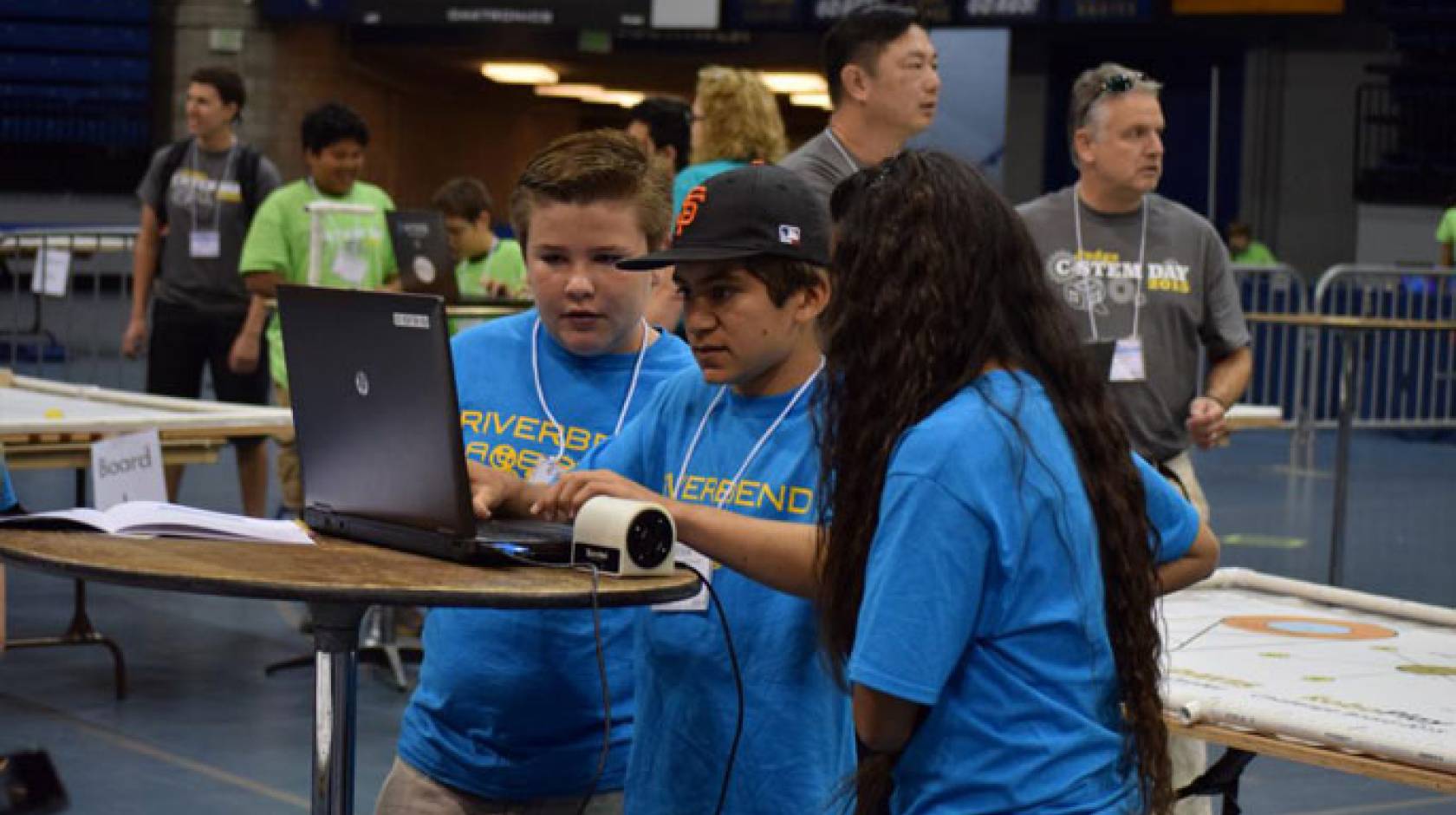Andy Fell, UC Davis

School districts now have an easier route to add computer science education with a full first-grade-to-high-school curriculum, integrated with mathematics, from the Center for Integrated Computing and STEM Education at the University of California, Davis.
Building on the C-STEM Center’s proven educational computing and robotics technologies, including C-STEM Studio and RoboBlockly, the C-STEM Information and Communication Technologies Pathway, or ICT-Pathway, curriculum will allow school districts to meet President Obama’s goals of “Computer Science For All,” offering every student hands-on computer science and math classes, said center Director Harry Cheng, professor of mechanical and aerospace engineering at UC Davis. Because C-STEM classes integrate computer programming into math with an emphasis on algebra, they don’t have to displace other vital classes.
“We integrate computing into math, and use it as a tool for hands-on integrated learning in math and computer science,” Cheng said.
As a result, students on the C-STEM ICT Pathway are exposed to coding in Blockly and C/C++ for 12 years, woven together with math, science, engineering and even artistic projects such as video production.
“You don’t learn English once in one year of school, so why should we teach the language of computers that way?” Cheng said. “Students can revisit it several times.”
Training for teachers included
A significant hurdle for adopting computer science in schools is a lack of trained teachers. The C-STEM Center can provide two-day training academies and weeklong institutes in using the curriculum in the classroom for teachers who have no prior computer programming and robotics experience. The center can also tailor on-site training sessions to the needs of individual schools and districts.
In addition, the C-STEM Train-the-Trainer Affiliate Program allows district and county office of education staff, experienced teachers, and college and university faculty to become certified C-STEM trainers who can hold C-STEM professional development for teachers in their district, county, or geographic area.
C-STEM classes and curricula are already in use in over 200 elementary, middle and high schools in California, and the center has provided professional development for more than 500 K-12 teachers.
Closing the achievement gap
The programs are particularly effective in engaging students who are underperforming in math and science and closing the “achievement gap” for students from underrepresented groups, Cheng said.
For example, when Hillcrest High School in Riverside, California, adopted C-STEM Integrated Math II in 2014, 94 percent of students earned a passing grade, compared to 61 percent of students in the conventional Integrated Math II.
Key to Cheng’s approach is giving students who may have struggled in math a sense of achievement.
“We want students, regardless of their social-economic status and background, to have an opportunity to win,” he said. The center organizes an annual C-STEM Day with a level-playing field RoboPlay Competition, held simultaneously in Davis and in Orange County, where students from surrounding schools gather to showcase their skills in math, programming and creative thinking. This year’s event will be held on May 21.
The center also runs the Girls In Robotics Leadership, or GIRL, summer camps at multiple locations in collaboration with school districts and other partners through the GIRL Camp Affiliate Program. Through peer mentoring and hands-on robotics, the GIRL camp builds the confidence for girls in middle school to pursue computing related STEM careers. The camp is free to participants.
As a UC Approved Educational Preparation Program for undergraduate admission for all UC campuses, the C-STEM program aims to prepare all students for post-secondary studies and careers in STEM fields. The C-STEM Center also has “A-G Program Status” from the University of California, meaning that its courses fulfill admission requirements for the UC and California State University systems.
The center’s activities are partly supported by grants from the National Science Foundation and California Department of Education.

